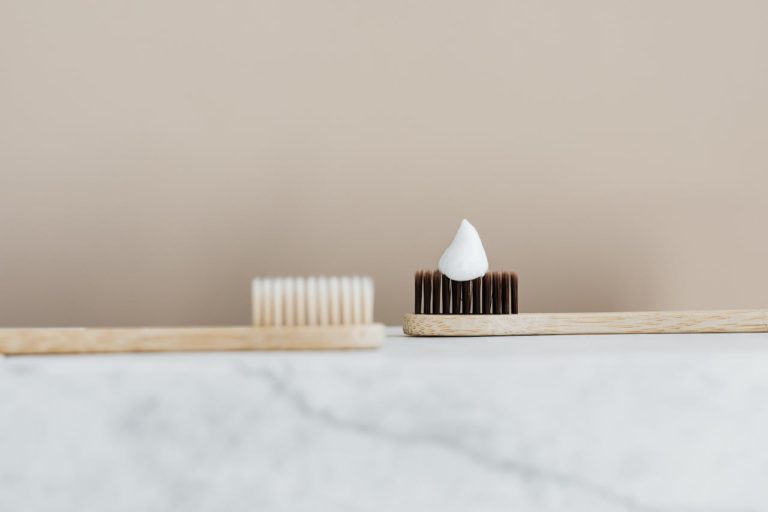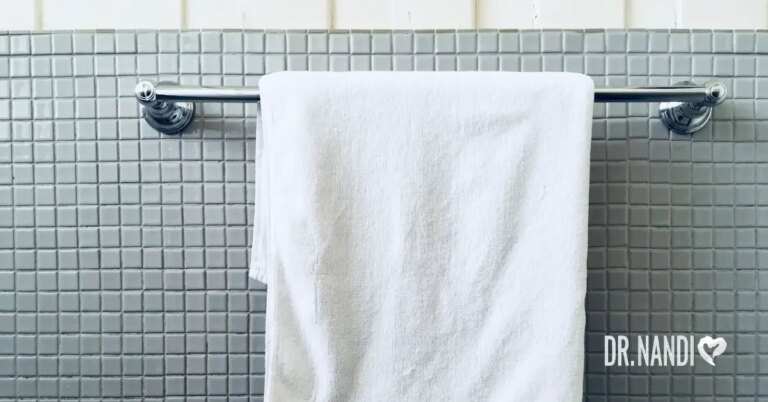Did you know that adding a clove of garlic to your toilet can work wonders for its cleanliness and freshness? While it may sound unusual, garlic has been used for generations as a natural solution for maintaining a hygienic toilet.
This remarkable vegetable contains compounds with antibacterial, antifungal, and mold-deterrent properties, making it an effective tool for toilet cleaning. In fact, scientific studies have highlighted the benefits of garlic in maintaining a clean and odor-free toilet.
Let’s delve into the fascinating world of garlic and explore how it can revolutionize your toilet cleaning routine.
The Science Behind Garlic’s Powerful Properties
Even though our toilets have come a long way with modern improvements, there’s still a risk of encountering harmful germs if they’re not cleaned properly. In fact, there have been cases of disease outbreaks linked to toilets, mostly because restroom facilities weren’t cleaned or disinfected well enough. [1,2,3]
This highlights the urgent need for effective toilet cleaning methods that are both convenient and eco-friendly. Fortunately, garlic presents a natural and powerful solution to combat these issues.
Antibacterial Power
Groundbreaking research led by Chester J. Cavallito, published in the Journal of the American Chemical Society, delved into the antibacterial properties of garlic clove homogenates, specifically attributing them to a compound called allicin.
Their studies demonstrated the ability of garlic to combat bacteria such as Escherichia coli and Staphylococcus aureus, which are commonly found in toilets and can cause infections if not properly eliminated. [4,5]
Fungus and Mold Resistance
Several studies have demonstrated that garlic’s sulfur compounds have potent antifungal properties, inhibiting the growth of fungi such as Candida albicans, which can lead to fungal infections and unpleasant odors in toilets. [6,7,8]
By incorporating garlic or garlic-based solutions in mold-prone areas, you can tap into its antifungal powers to combat and prevent mold infestations.

Telltale Signs It’s Time to Clean Your Toilet
Toilet problems and symptoms can often indicate the need for thorough cleaning and maintenance. Here are some signs to watch out for:
- Lingering unpleasant odors: Persistent foul smells in the bathroom, even after regular cleaning, may indicate the presence of bacteria or mold in the toilet bowl or pipes.
- Stains and discoloration: Noticeable brown or yellow stains on the toilet bowl’s surface can be a sign of mineral buildup, bacterial growth, or mold.
- Difficulty in flushing: If the toilet flushes slowly or incompletely, it may be due to blockages caused by debris or mineral deposits.
- Presence of mold or mildew: Black or greenish spots or patches in the corners or crevices of the toilet bowl suggest the presence of mold or mildew, which require thorough cleaning.
Easy Steps to Use Garlic in Toilet Cleaning
Now that we understand the science behind garlic’s effectiveness, let’s explore how to harness its power for comprehensive toilet cleaning. Follow these steps for a sparkling clean and fresh-smelling toilet:
- Peel a clove of garlic and drop it, whole or crushed, into the toilet bowl before bed.
- Allow the garlic to work its magic overnight. The antibacterial properties of garlic will help eliminate harmful bacteria, while the sulfur compounds will neutralize unpleasant odors.
- In the morning, give your toilet a thorough scrub using a toilet brush to remove any remaining dirt or stains.
- Finally, flush the toilet to complete the cleaning process and enjoy a clean and fresh toilet.
Remember that while using garlic is an efficient cleaning hack, it should not replace routine toilet cleaning. Regular maintenance is essential for optimal hygiene.

Garlic Alternatives: 3 Time-Tested Tricks for Efficient, Effortless Toilet Cleaning
In addition to garlic, there are other tried-and-true methods for achieving a clean and fresh toilet. Consider incorporating these techniques into your toilet cleaning routine:
Toilet Bowl Whitening With White Vinegar: A Classic Technique
White vinegar is a versatile and eco-friendly cleaning agent. It can effectively whiten and disinfect the toilet bowl. Here’s how to use it:
- Pour a tablespoon of white vinegar into the toilet bowl.
- Let it soak for an hour, allowing the acetic acid in the vinegar to break down mineral deposits and stains.
- Use a toilet brush to scrub away grime and hard-to-reach areas.
- Rinse with clean water and dry the toilet with a cloth or paper towel.
Brown Stains on Toilet Bowl: Dishwasher Tabs to the Rescue
Dishwasher tabs, usually used for cleaning dishes, can also be effective in removing stubborn stains from the toilet bowl. Follow these steps:
- Flush the toilet to wet the bowl.
- Drop a dishwasher tab into the water and allow it to dissolve.
- Leave it overnight to let the detergent work its magic.
- In the morning, use a toilet brush to scrub away the stains.
- Flush the toilet to rinse off the residue.
Beating Toilet Stains and Odor: Baking Soda as Natural Deodorizer
Baking soda is a gentle yet powerful cleaning agent that can help eliminate odors and remove stains from the toilet bowl. Here’s how to use it:
- Sprinkle one to two tablespoons of baking soda into the toilet bowl.
- Allow it to sit for a few minutes to absorb odors and loosen dirt.
- Scrub the toilet bowl using a long-handled brush.
- Flush the toilet to rinse away the baking soda and reveal a clean and fresh toilet.
Bonus Tip: Baking Soda and Lemon as Instant Odor-Neutralizing Duo
Despite thorough cleaning, persistent unpleasant odors can still linger in the bathroom. Here’s an extra tip to neutralize those odors:
Create a natural air freshener by combining baking soda and lemon:
- Blend equal parts baking soda and lemon juice in a bowl until you achieve a paste-like consistency.
- Apply the mixture with a sponge to the toilet bowl and any hard-to-reach areas.
- Scrub with a brush and let it sit for ten minutes.
- For stubborn stains and grime, spray a generous amount of white vinegar and let it fizz.
- Wipe the toilet bowl clean and dry.
If unpleasant odors persist even after a thorough cleaning, it may indicate a plumbing issue. In such cases, it is advisable to seek professional help.

Preventive Measures and Additional Tips
In addition to the techniques mentioned above, here are some preventative measures and additional tips for maintaining a clean and fresh toilet:
- Regularly clean the toilet bowl, including the rim, seat, and outer surfaces, using a suitable toilet cleaner.
- Use a toilet brush specifically designated for cleaning the toilet and replace it regularly to avoid bacterial buildup.
- Place an automatic toilet cleaner or toilet bowl cleaner tablet in the tank to continuously maintain cleanliness between cleanings.
- Keep the bathroom well-ventilated to prevent the growth of mold and reduce unpleasant odors.
- Use toilet paper that dissolves easily to prevent clogging.
- Avoid flushing non-biodegradable items, such as wet wipes, cotton balls, or sanitary products, as they can cause blockages in the plumbing.
- Consider using eco-friendly toilet cleaning products that are safe for both the environment and your health.
My Personal RX on Incorporating Nature’s Gifts Into Your Cleaning Routine
Creating a healthier household environment doesn’t just depend on the foods we consume or the supplements we take; it also involves how we maintain our living spaces. As a healthcare professional, I advocate for the use of natural ingredients in household cleaning. These alternatives to chemical cleaners can reduce exposure to harsh substances, improve indoor air quality, and support overall health.
- Utilize Baking Soda: Baking soda is a versatile cleaner that is great for scrubbing surfaces, deodorizing spaces, and even clearing clogged drains. It’s gentle yet effective, making it an excellent choice for those looking to avoid harsh chemicals.
- Harness the Power of Vinegar: White vinegar has natural disinfectant properties, making it perfect for cleaning windows, mirrors, and surfaces. It can also be used as a fabric softener replacement to reduce chemical exposure from laundry.
- Lemon for a Fresh Scent and Shine: Lemon juice is not only good for health; its natural acid provides a thorough clean and leaves a refreshing scent. Use it to remove stains, polish metal surfaces, or mix with olive oil for a natural furniture polish.
- Essential Oils for Disinfecting: Add essential oils like tea tree, lavender, or eucalyptus to your homemade cleaners for their antibacterial properties and soothing scents. These oils can enhance cleaning efficacy and improve the atmosphere of your home.
- Support Your Body with Liver Support Supplements: While shifting to natural cleaning methods, consider supporting your body’s internal cleaning system with Liver Support supplements. These can help your liver more efficiently process and eliminate any residual toxins you might encounter.
- Practice Calming Meditation Techniques: Cleaning can be a stressful chore. Incorporate mindfulness and stress-reduction strategies from my Calm the Chaos series to turn cleaning into a more relaxing, therapeutic activity. This can transform household chores into a form of self-care.
- Educate Yourself and Others: Share your knowledge about the benefits of natural cleaning solutions with friends and family. Educating others not only promotes healthier practices but can also lead to a community-wide reduction in chemical usage.
By adopting these natural cleaning methods, you contribute to a healthier home environment while simultaneously taking care of the planet. Plus, coupling these practices with internal health supports like Liver Support supplements ensures you are caring for your body both inside and out.
Sources:
- Rajaratnam, G., Patel, M., Parry, J. V., Perry, K. R., & Palmer, S. R. (1992). An outbreak of hepatitis A: school toilets as a source of transmission. Journal of public health medicine, 14(1), 72–77. https://pubmed.ncbi.nlm.nih.gov/1599746/
- Palmer, S. R., Jephcott, A. E., Rowland, A. J., & Sylvester, D. G. (1981). Person-to-person spread of Salmonella typhimurium phage type 10 after a common-source outbreak. Lancet (London, England), 1(8225), 881–884. https://doi.org/10.1016/s0140-6736(81)92149-8
- Giannini, M. A., Nance, D., & McCullers, J. A. (2009). Are toilet seats a vector for transmission of methicillin-resistant Staphylococcus aureus?. American journal of infection control, 37(6), 505–506. https://doi.org/10.1016/j.ajic.2008.11.005
- Cavallito, C. J., Buck, J. S., & Suter, C. M. (1944). Allicin, the antibacterial principle of Allium sativum. II. Determination of the chemical structure. Journal of the American Chemical Society, 66(11), 1952-1954. https://doi.org/10.1021/ja01239a049
- Cavallito, C. J., & Bailey, J. H. (1944). Allicin, the antibacterial principle of Allium sativum. I. Isolation, physical properties and antibacterial action. Journal of the American Chemical Society, 66(11), 1950-1951. https://doi.org/10.1021/ja01239a048
- Shuford, J. A., Steckelberg, J. M., & Patel, R. (2005). Effects of fresh garlic extract on Candida albicans biofilms. Antimicrobial agents and chemotherapy, 49(1), 473. https://doi.org/10.1128/AAC.49.1.473.2005
- Khounganian, R. M., Alwakeel, A., Albadah, A., Nakshabandi, A., Alharbi, S., & Almslam, A. S. (2023). The Antifungal Efficacy of Pure Garlic, Onion, and Lemon Extracts Against Candida albicans. Cureus, 15(5), e38637. https://doi.org/10.7759/cureus.38637
- Ogita, A., Fujita, K. I., Taniguchi, M., & Tanaka, T. (2006). Enhancement of the fungicidal activity of amphotericin B by allicin, an allyl-sulfur compound from garlic, against the yeast Saccharomyces cerevisiae as a model system. Planta medica, 72(13), 1247-1250. https://doi.org/10.1055/s-2006-947203





















